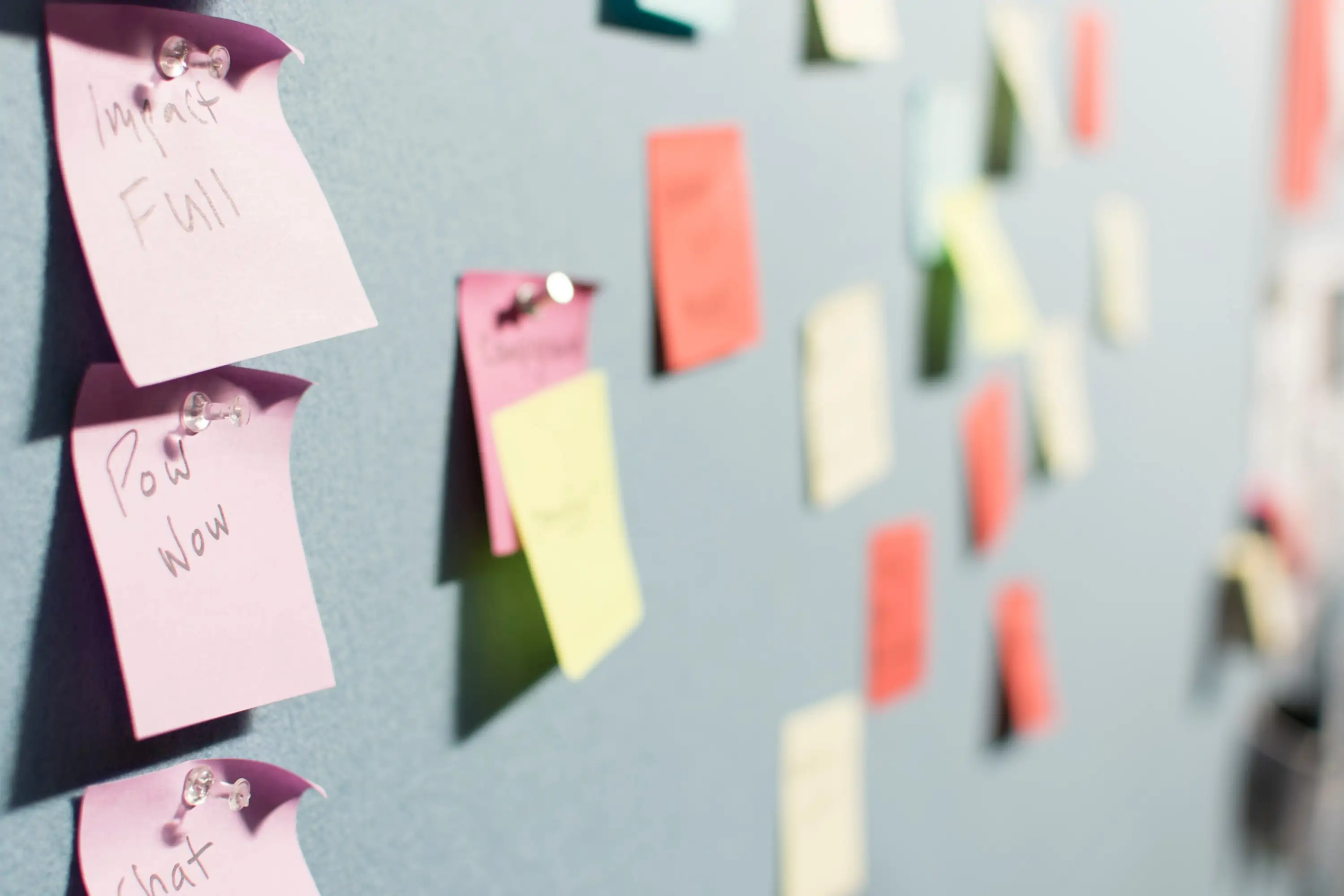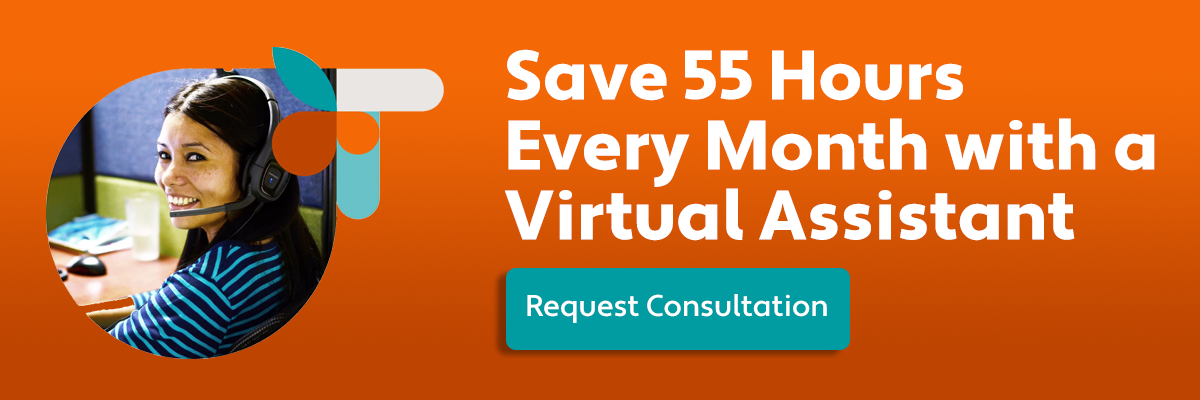There are thousands of articles aimed at making you more productive and it can be challenging to decipher which ones work and how to implement the ones that do.
We’ve done the time-consuming work for you and consolidated the most effective productivity studies and expert recommendations into actionable tips.
In this research-packed guide, we’ll teach you how to:
- Add more time to your day by improving your daily habits
- Stay productive throughout the workday
- Prevent small tasks from piling up
- Complete large projects efficiently
- Leverage the simplest productivity strategy
Improve Your Daily Habits
Becoming a productive person starts with changing the daily habits that are slowing you down. Here are three proven methods that will instantly add more time to your day:
1) Follow David Allen’s 5 Steps to Get Things Done
David Allen is a productivity expert who has helped millions of people live more productive lives. While Allen has a near fanatical following, most people get too overwhelmed by the lengthy books he uses to map his system. But, actually, his time management philosophy is based on just these five steps for getting things done:
1) “Collect what has your attention.”
Before you start work each day, write down everything that’s on your mind that you need to do. Include work to-dos, personal to-dos, miscellaneous thoughts, etc. This task gives you a full picture of what’s on your mind so you can prevent random ideas from becoming distractions later.
2) “Process what it means.”
Once you have your list, think about each item. If the idea is actionable, write down the action(s) you need to take. If it's is not actionable, cross it off.
3) “Put it where it belongs.”
Once you have a list of actions, decide how and when you’re going to complete them. Blocking off time on your calendar and/or setting reminders will ensure you get them done.
4) “Review frequently.”
Continuously go back to your list, calendar, and reminders to check that all your tasks are being completed on time and to re-prioritize them as needed. Being agile with your schedule helps you get the most value out of your limited time.
5) “Simply do.”
After everything is scheduled and prioritized, stop worrying about what you should be focused on and start crossing things off your list.
Repeat this process on a daily or weekly basis depending on how often new tasks pile up and need to be organized.
To learn more, check out the article How to Make GTD work for you.
2) Reduce the Number of Decisions You Make
The average American adult makes 35,000 decisions every day. That number may sound extreme but, think about how many decisions you make just before starting work each morning. You decide if you should eat breakfast, what to eat, what shirt to wear, what shoes, you likely read some emails, some news articles etc. The list goes on and on, and that’s just basic things that don’t compare to what you have to think about at work.
Researchers have found that our decision-making capabilities are like a muscle, the more decisions you make, the less mental energy you have. Thus, you should preserve your energy for your most challenging tasks.
There are two ways to reduce the number of decisions you make:
1) Stop making decisions that don’t generate value. For example, choices like what you eat for breakfast or which color shirt you wear have a negligible impact and aren’t worth the effort. Instead, choose a routine breakfast and wardrobe so, in the morning, you can grab and go. This practice has been used by highly productive people like Steve Jobs and Mark Zuckerberg who wore similar outfits every day.
2) Delegate decisions that don’t require your direct input. If you’re a higher level professional, you probably focus on a lot of administrative work that isn’t worth your time and energy. Delegate tasks such as scheduling, database management and other process-oriented tasks to assistants who can quickly take care of them.
Remember: the fewer decisions you focus on, the more rational the ones you make will be.
3) Make Impulsive Decisions to Save Time
Among the simple decisions you continue to make, spend less time on them. It’s estimated that adults spend nearly eight hours per week making decisions. A lot of that time is spent weighing options that don’t matter. While you should continue to deliberate over decisions like large purchases, what strategies your team should implement, and who you spend time with, you shouldn’t put a lot of thought into actions that have negligible impacts.
If the decision you’re making doesn’t have a significant impact on a project outcome, relationship, or something similarly substantial, make it impulsively. This may be difficult if you’re the type of person who likes to contemplate all your options, but the time and energy you spend thinking adds up and is better spent on tasks that generate value.
How to Stay Productive Throughout the Workday
A survey found that 95% of professionals are distracted at work. The distractions vary from constant emails to social media to chatty coworkers but they are symptomatic of people’s inability to stay focused.
A Carnegie Mellon researcher discovered that people perform 20% worse when they are distracted. Thus, in addition to the time spent on distractions, you lose hours working at a slower pace and fixing mistakes that otherwise wouldn’t have been made. If left unresolved, you can find yourself caught in a cycle of working long hours as you fight to meet deadlines.
It’s impossible to eliminate all distractions so you must improve your ability to ignore them. These strategies will improve your attention span so you can stay focused throughout the day.
Turn Off Notifications and Opt Out of Meetings
Studies show that in-off employees spend 50%-80% of their time communicating. While some of that time is spent dealing with important meetings and messages, the majority of it is wasted on unproductive conversations and immediately responding to messages that aren’t urgent.
Here are three communication tips that will help you save time and improve your focus:
- Turn off email and chat notifications. Every time you’re distracted by a notification, it takes an average of 23 minutes to fully refocus on the task at hand. To prevent notifications from ruining your focus, schedule three to four times throughout the day when you check and respond to all messages. Let your team know that if they need urgent help, they can contact you via phone or another method.
- Opt-out of unproductive meetings. According to Atlassian, about half of the meetings employees attend are considered a waste of time. If possible, opt out of all meetings that you don’t play a key role in and ask for email updates instead.
- Be precise in your communication. People waste a huge amount of time answering questions, fixing mistakes, and dealing with other conflicts as a result of poor communication. When sending messages, spend a few extra minutes making sure your language is clear and that you’ve included all the information the recipient needs to know.
Being intentional about how and when you communicate increases your focus at work and prevents you from wasting time with unproductive conversations.
Go on Brief Walks Throughout the Day
Going for brief walks throughout the day is a simple action that has huge benefits. Research shows that brief walks:
- Increase blood flow which increases your energy level and alertness.
- Helps you think more creatively since movement shifts your brain away from strictly linear thinking.
- Generally improves your cognitive function so you’re able to focus better and for longer periods of time.
To maximize these benefits, avoid answering messages or thinking about work while you’re on your walk. Giving yourself a few minutes throughout the day to relax is essential to be able to perform at your highest level.
However, if you don’t have time to take walking breaks, opt for walking meetings. These are great for anytime you need to briefly catch up with a team member and you don’t need to look at a computer report.
Organize Your Schedule Around Your Biological Clock
Research has found there are four distinct biological clock patterns, known as chronotypes. Understanding your chronotype can dramatically improve your productivity by enabling to adapt your schedule to your body’s natural energy rhythms.

Here are the four types and examples of how to leverage them.
Dolphins - More commonly known as insomniacs, individuals with this chronotype are extremely light sleepers. Despite their lack of sleep, dolphins tend to be highly intelligent and accomplished because they’re able to use their sleepless hours to think deeply about their goals and work to make better decisions. However, their insomnia often makes them irritable and anxious so, they work most productively when they’re left alone. Here’s how to be more productive:- Work alone as often as possible.
- Don’t fight your insomnia; if you’re up in the middle of the night utilize the time.
- Whenever possible, take advantage of the times you do feel tired and rest.
- Complete all your important work during the daytime hours so you can spend the evening recharging.
- Avoid staying up late or waking up early because your body relies on a consistent sleep schedule.
- Schedule your most important work for midday when you’re at your energy peak.
- Schedule your most important work in the mornings.
- Avoid staying up late because it throws off your natural cycle.
- Arrive at the office early so you can cram through work with minimal distractions.
- Make strategic decisions and outline projects in the evenings. This will allow you to focus on implementation in the mornings when you’re tired.
- Avoid scheduling important meetings in the morning.
- If you’re struggling to get enough hours of sleep, try to compensate by resting in the afternoons/evenings.
By adapting your schedule based on your chronotype you can harness your body’s peak energy levels to improve your productivity.
Action Steps:
- Turn off notifications and block off time to respond to messages
- Go on brief walks throughout the day
- Organize your schedule around your biological clock
How to Prevent Small Tasks from Piling Up
Sometimes small tasks are the hardest to complete. While you’re busy working on your big, urgent projects it’s easy to let the small things slide until they build up and become a productivity killer.
Try these tips to efficiently complete small tasks:
Do them later in the day and/or when you’re tired
Studies show that our willpower weakens as the day goes on. In the afternoons and evenings, you likely lack the mental energy to complete strategic tasks efficiently. Take advantage of your tiredness by doing small tasks when you’d typically be your least productive. By listening to your body’s natural energy cycle, you can free up more time during the day for projects that require your full attention.
Group them into large tasks
If the reason you struggle to complete small tasks is because it’s easy to push them aside in favor of working on larger projects, group them together based on where you need to do them (home, office, shopping center, etc) and block off a few hours on your calendar every week to get them done.
Eliminate or delegate small tasks.
When it comes to small work tasks, another option is to decide not to do them. As a business leader, your time is best spent on developing business strategies, fostering relationships, and other projects that only you can do. Process-oriented tasks like scheduling meetings, keeping databases clean and up-to-date, collecting basic research etc. are not worth your time and should be delegated to a subordinate.
If your company does not have in-house administrative support, consider hiring a managed virtual assistant. The benefit of working with a managed service is that, unlike with other freelance virtual assistants, is that you have access to account managers and assistant trainers who help you facilitate a productive relationship with your assistant.
Action Steps:
Sometimes small tasks are the hardest to cross off your to-do list. If that’s the case, follow these tips to efficiently get them done:
- Complete small tasks when you’re tired.
- Group them into larger projects.
- Eliminate or delegate all small tasks that don’t directly contribute to your goals.
Strategies for Efficiently Completing Large Projects
When you’re constantly being bombarded with new information and requests, staying on top of long-term projects can be a challenge, especially when unexpected issues stall your progress.
These strategies will help you overcome roadblocks and maintain your momentum.
Take an Agile Approach
If you’re not familiar with agile, it’s a project management methodology that was designed to help programmers be more efficient. The basis of agile is that rather than planning projects from start to finish, teams work in a series of short, adaptable phases to produce a result rather than a specific outcome.
Regardless of your role, there are some elements of this method that you can use to be more productive:

Maintain a Backlog of Ideas You’d Like to Pursue
Agile engineers work with a specified goal in mind but, rather than having a specific list of milestones they need to complete to achieve that goal, they have a list (known as a backlog) of all the features they think need to be produced to exceed their target customer’s expectations.
Rather than thinking of projects as a single, time-consuming entity, focus on the goal you’re striving to achieve and make a list of all the tasks that will help you achieve it.
Your backlog is a living document. Until the project deadline, continue adding ideas to it and prioritizing the list.
Here’s an example:
As a marketer, my primary goal is to generate leads. However, there’s no single way to achieve that. So, my team and I maintain a backlog where we store all of our ideas. Each week, we review it and choose which projects are most likely to make an impact.
Work in Sprints
Once you’ve developed your backlog, you’ll use it to plan your sprints. Sprints, also known as iterations, are one to two week cycles focused on completing the top-priority tasks you decided on.
At the end of each sprint, review what you’ve accomplished and use that information to help you decide which projects from your backlog you should work on next.
Embrace Evidence-Driven Change
One of the core values of agile is that producing great work is the number one priority and to do that teams must open to change at any point in the project. Agile teams often adapt deliverables and priorities throughout a project’s life so that it’s completed based on the most up-to-date knowledge and goals as possible.
As you work on large projects, you should think of new ways to achieve your desired result or a better one and act on those ideas if there is evidence that suggests they’ll be effective.
Recap:
- Maintain a backlog of ideas that will help you achieve your goals.
- Focus on achieving one to two week milestones.
- Continuously adapt your priorities as you gain new information and clarity about your goals.
Work in Strategic Blocks
If you’re like most professionals, your day is spent bouncing around between meetings and multiple projects. While that seems inevitable from a scheduling standpoint, it is an ineffective way to spend your time.
Every time you switch between tasks, you experience a cognitive delay as your brain tries to refocus. Research shows that repeatedly changing activities can reduce your productivity by up to 40%. That’s a massive loss of productivity.
To maximize your productive hours, group together similar activities and block time on your calendar for them. If possible, limit your meetings to certain times of the day or certain days of the week.
Even if you can’t control your meeting schedule, you can mitigate their effect by setting aside the time before or after them to work on related projects.
Blocking your schedule increases your likelihood of entering flow states where your mind is fully immersed in your work. To get into it, you need uninterrupted time to focus on challenging, in-depth projects.
Though shifting to a time-blocked schedule may be challenging, the results are well worth it. A 10-year long McKinsey study found that executives reported being 5x more productive when they were in the flow. This increase in productivity allows you to achieve far greater success than if you follow a typical schedule.
Get Off Your Computer Every 52 Minutes
Regardless of how busy you are, piling work and meetings back-to-back is detrimental to your productivity. Our brains and bodies aren’t meant to operate at high levels for eight to ten hours a day. In one study, the top 10% most productive workers in their sample took a break from their computers for an average of seventeen minutes every 52 minutes.
While taking seventeen-minute breaks every hour sounds like a lot of wasted time, it recharges your body and mind so you’re able to work faster while making fewer mistakes.
Not all breaks are beneficial though. Scrolling on social media, reading negative news stories, and doing other sedentary, information-consuming tasks don’t give your mind or body a chance to fully relax.
Here are some examples of breaks that research shows increase energy:
- Go for a walk outside. Just twenty minutes in direct sunlight is enough to give your body a mild recharge. Even if it’s cloudy, as it often is here at the Prialto HQ in Portland, just getting out of your office’s artificial light is beneficial.
- Chat with your co-workers about something non-work-related. Taking your focus off work for a bit is a great way to let your subconscious take over and think of better solutions. Plus, having positive social interactions boosts your mood and makes you feel more energized. Bonus points if you laugh.
- Walk around the office and eat a complex carb snack. Complex carbs like whole grains are perfect between-meal snacks because they fuel your energy levels and mood while keeping you full for longer than most other types of food.
You’ll gain back your break times when you complete projects faster and more accurately thanks to your mind and body feeling more refreshed.
Action Steps:
Staying productive from start-to-finish on large projects can be challenging especially as other tasks fight for your attention. Follow these tips to ensure you don’t lose your momentum:
- Take an agile approach
- Work in strategic blocks
- Get off your computer every 52 minutes
The Simplest Way to Boost Your Productivity
All of the strategies in this guide will boost your productivity. However, for them to be productive, you need to invest substantial upfront effort to adjust your schedule and habits.
Many people don’t have the time, ability, or desire to do that effectively. This is why the simplest productivity strategy is to offload tasks to a virtual assistant through a managed service.
A VA will boost your productivity by:
- Tackling your tedious admin, sales support, and back-office tasks so you can focus on the activities that drive your success.
- Enabling you to gain more leverage from your tools by doing the heavily-lifting of keeping them up-to-date.
- Making it easier for you to adopt the productivity strategies in this article by managing your calendar to ensure your schedule meets your preferences.
This allows you to achieve quick and lasting productivity improvements without having to make major changes to your workflow.
Contact us to explore how a virtual assistant can boost your productivity.

